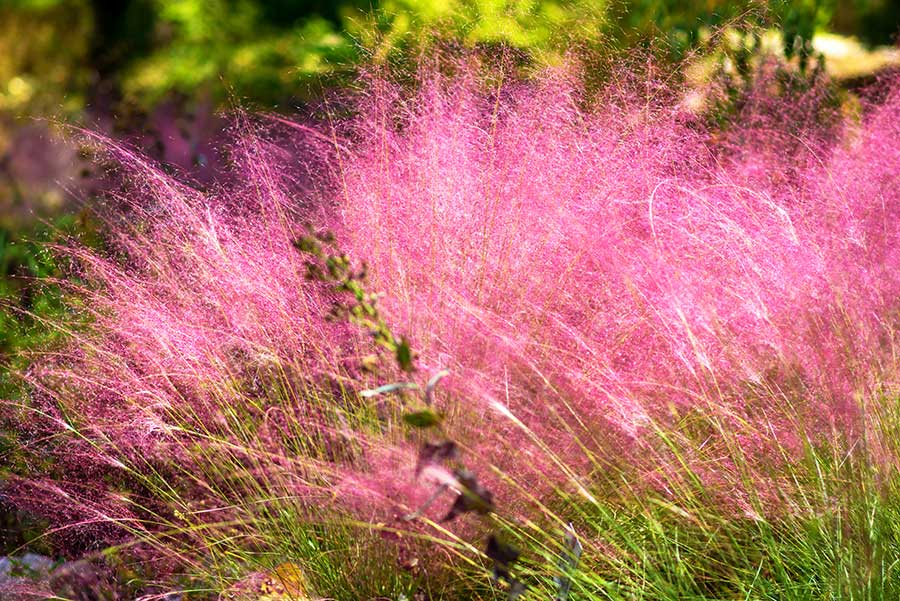Fall-blooming native plants are easy to grow in containers or in the ground. We have picked our favorite native fall flowers, vines, and grasses to add color to your landscape this autumn.
Fall-blooming Native Perennials
There are lots of options for flowers available for planting in the fall. Here are some of our favorites options for what to plant for fall color:
#1: Asters
There are several fall-blooming native asters to choose from for your garden. They range in height, flower color, and soil requirements. The asters fall into several genera, including Symphyotrichum, Ampelaster, Doellingeria, Eurybia, Oclemena, Aster, and Sericocarpus.
Two native white asters include white Oldfield aster (Symphyotrichum pilosum) and small white aster (S. racemosum), both of which can be found in most of the eastern U.S. They bloom in late summer through fall and grow to be 1 to 3 feet tall. Planted in bunches, this plant’s tiny flowers create a profusion of white in your garden.
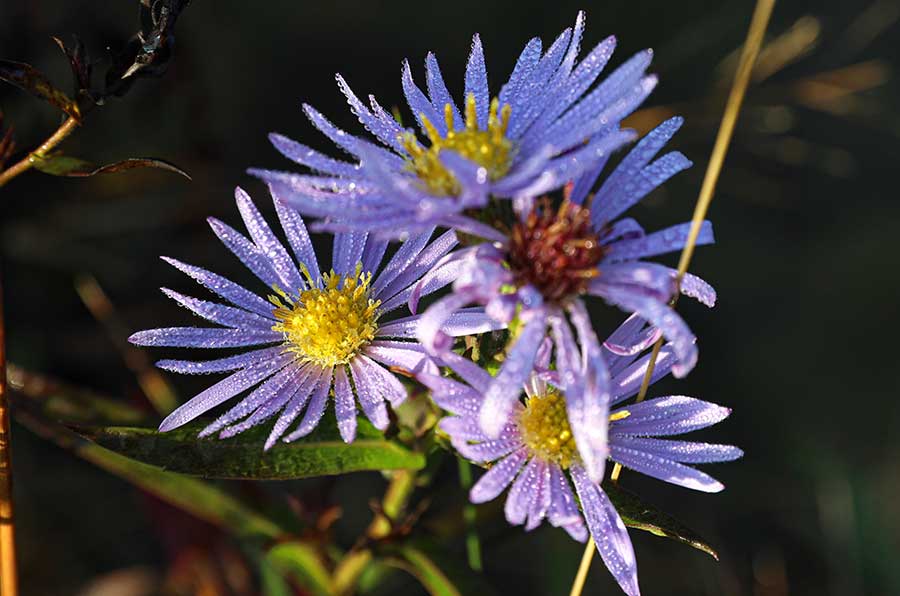
If you prefer purple asters, try planting the perennial Georgia aster (S. georgianum) with its vivid blue-purple flowers. It blooms throughout fall and grows to 2 to 4 feet in height. The Eastern silvery aster (S. concolor) has slightly smaller purple or lavender flowers and grows to 1 to 3 feet tall.
#2: Blue Mistflower
I adore this fuzzy flowered fall native perennial flower. Blue mistflower (Conoclinium coelestinum) grows to around 3 feet and produces multiple purple-blue flowers at the top of their stems. The flowers attract bees and butterflies. It spreads quickly, so be sure to plant it in a location where you won’t mind it multiplying. Pair it with ironweed, hot lips salvia, or a white aster for a great color combination. It blooms from mid-summer to late fall.
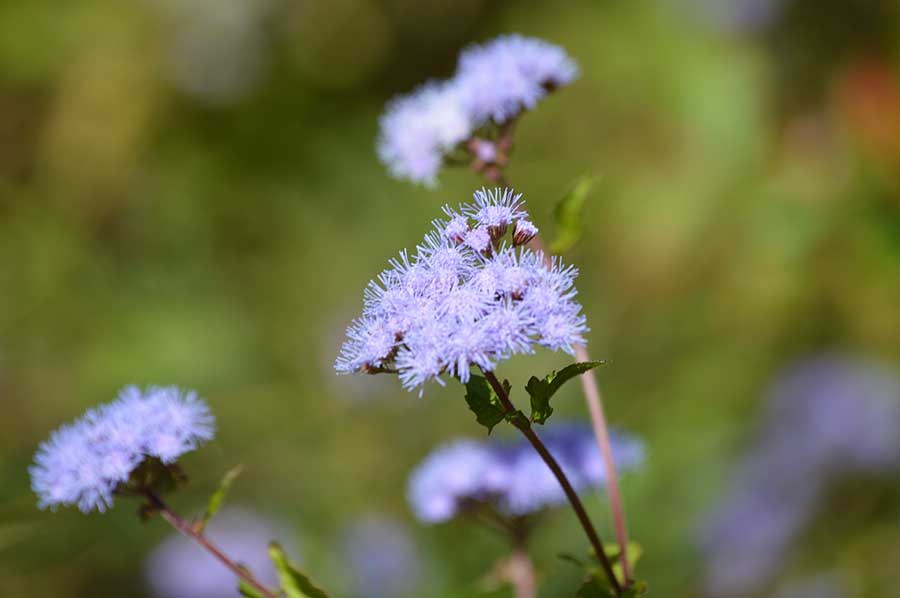
#3: Obedient Plant
Also known as false dragonhead, obedient plant (Physostegia virginiana) has multiple white or pink-purple flowers shaped like a snapdragon flower. It blooms in summer and fall and can be grown in full sun to part shade. It is drought-tolerant, deer-resistant, and very low maintenance.
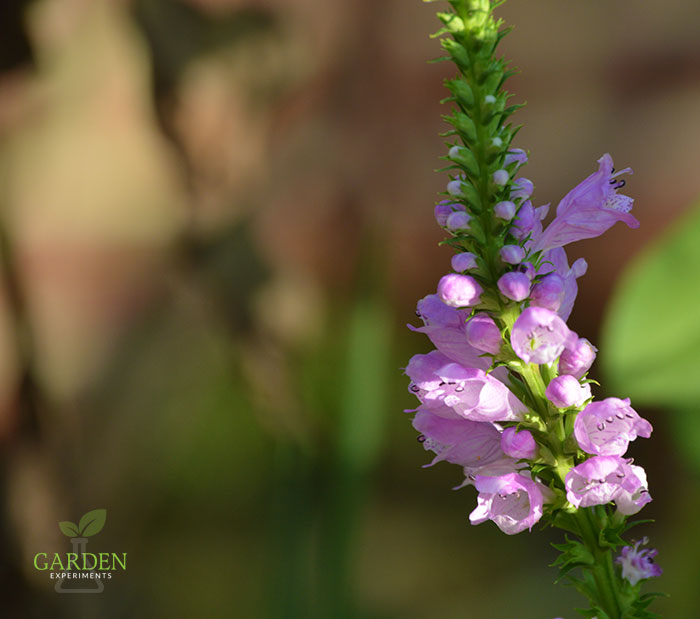
#4: Goldenrods

There are many native goldenrods, so check to see which ones suit your area and growing needs. Goldenrods bright yellow flowers attract bees, butterflies, and other insects and are a valuable fall food source. Some species spread rapidly, so check the details for each species carefully.
#5: Purple coneflower
Not only are the maroon/purple flowers of our native purple coneflower (Echinacea purpurea) a beautiful addition to the garden, but they also are a valuable seed source for songbirds. Purple coneflower grows 2 to five feet and flowers from spring to early fall. Plant this native perennial in full sun to part shade. Once established, it has a low water requirement. Echinacea flowers attract hummingbirds and butterflies.
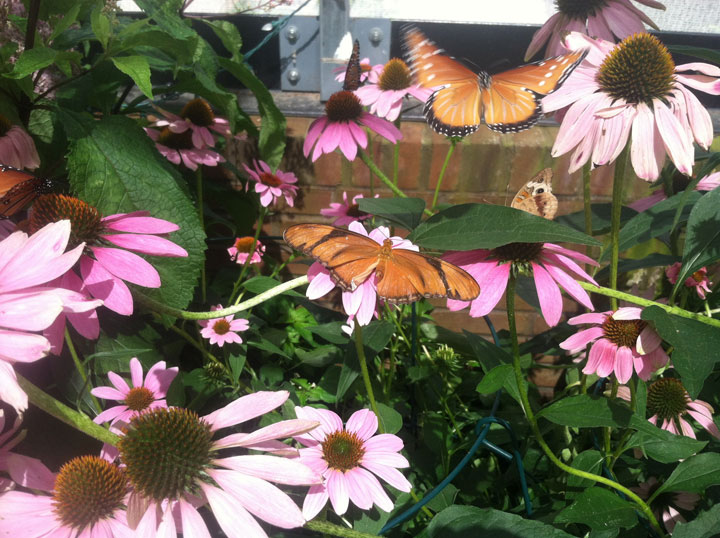
#6: Swamp Sunflower
The bright yellow flowers of swamp sunflower (Helianthus angustifolius) add a true pop of color to your fall garden. As its name implies, swamp sunflower, also known as narrow-leaf sunflower, prefers moist soils but can grow on drier soils if you water it regularly. This fall-blooming native plant grows to be quite tall – as much as eight feet. It blooms best in full sun but can be grown in part-shade conditions.
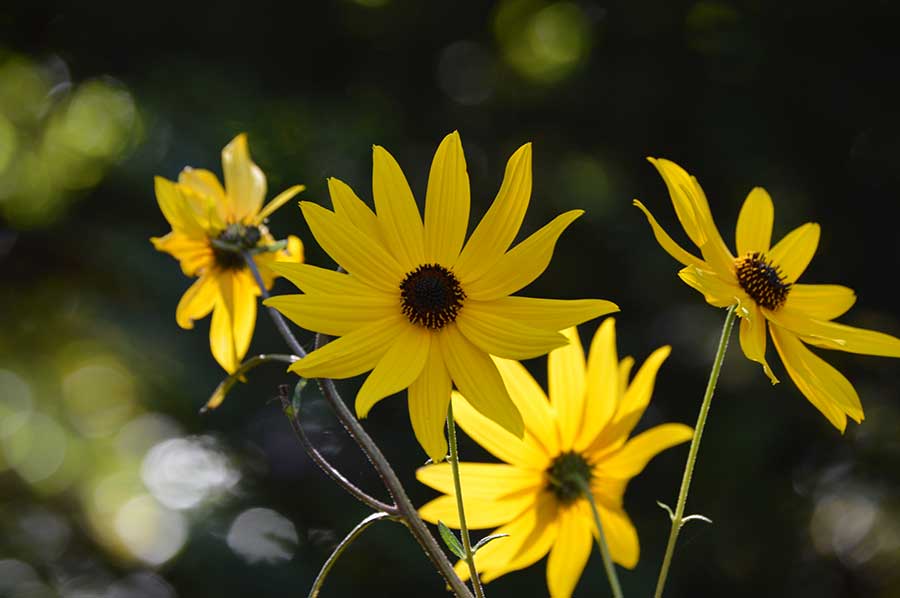
#7: Blazing Star
Blazing star (Liatris spicata) blooms in mid-summer to fall with bright purple flowers that bloom from the top to the bottom. The flowers of this native attract birds, butterflies, and bees. It grows to 2 to 4 feet tall and prefers well-drained soil in full sun conditions. Pair with goldenrod or obedient plant for a great color combination.
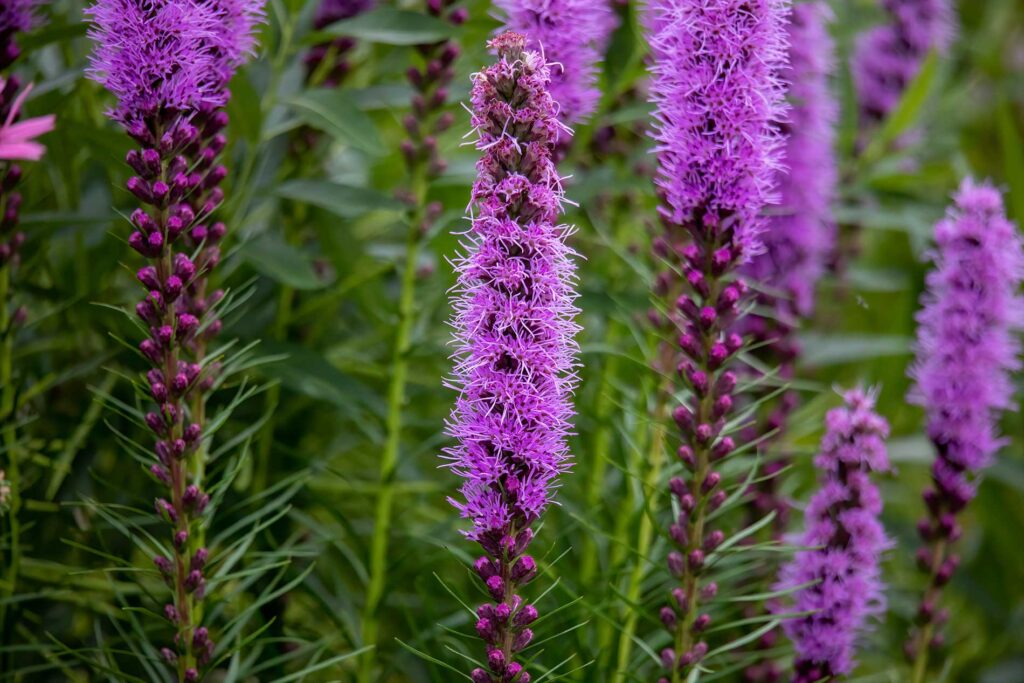
#8: New York Ironweed
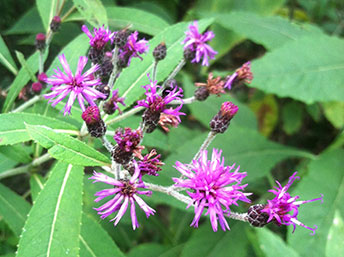
Another fall-blooming native plant with deep purple flowers is the New York ironweed (Vernonia noveboracensis). It grows 5 to 8 feet tall and blooms from summer to early fall. It is native to the eastern U.S. This ironweed spreads rapidly, so make your decision of where to plant it carefully. It prefers full sun but can tolerate part shade. It prefers moist soil but can handle drier soil if watered regularly.
#9: Sneezeweed
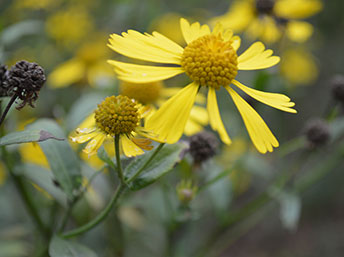
The interesting flowers of sneezeweed (Helenium autumnale) add to the color of your garden from late summer to fall. The flowers attract bees and butterflies, and the plant is deer-resistant. They prefer full sun and moist soils. Deadhead the flowers to extend the blooming season. Native sneezeweed has yellow flowers but there are many cultivars with orange and red colors.
#10: Cardinal flower
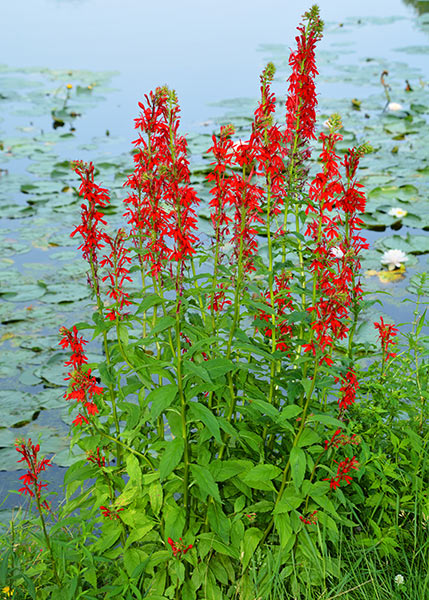
The rich red color of cardinal flower blooms brightens up the fall garden. This plant grows in moist soils and is often found along streams or ponds. It attracts hummingbirds, bees, moths, and butterflies, and the flower spikes grow to a height of 2 to 4 feet. This plant has a high water requirement and grows in full sun to part-shade and even full shade. Cardinal flower is a native perennial that blooms from mid-summer to fall.
#11: Joe Pye Weed
A favorite native perennial to attract butterflies and bees is Joe Pye weed (Eutrochium spp.); it’s a great pollinator plant. This fall-blooming native plant is native to the eastern and northern U.S. and grows to 6 feet and nearly as wide. There are shorter varieties available. It prefers full sun but can tolerate part-shade. The pale pink or purple flowers of Joe Pye weed look great when grown with native grasses. There are several native species of Eutrochium, so check your area to see which ones will work best for you and be sure to get one that is a fall-blooming native plant.
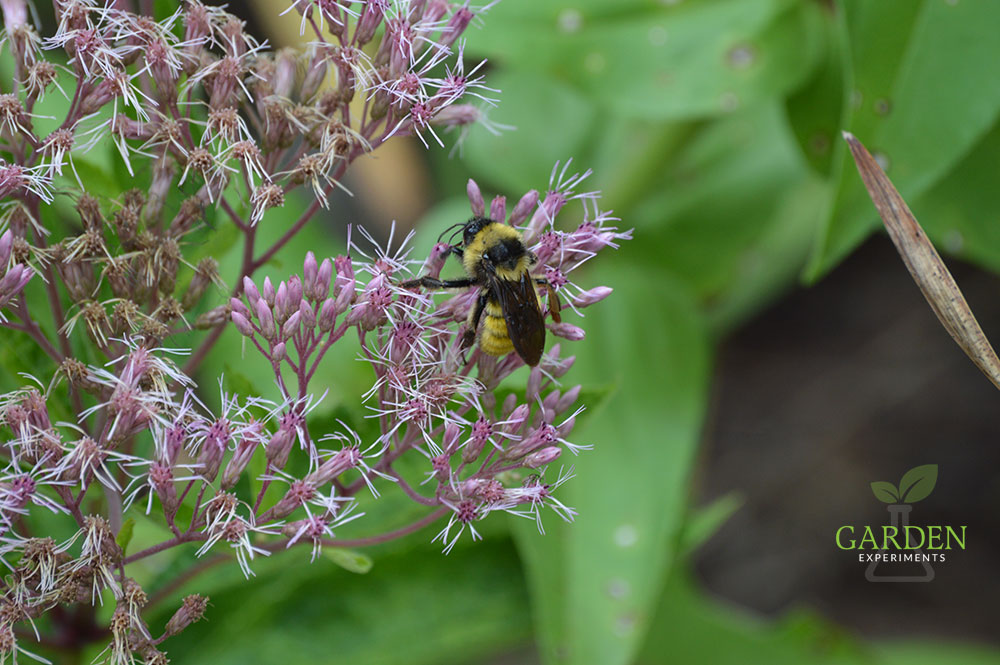
#12: Partridge Pea
Partridge pea is a great pollinator plant and a host plant for several butterflies, but it isn’t for every gardener. It has a ‘wilder’ look than many other fall-blooming natives; it may fall over and trail along the ground. This native perennial for fall color blooms from June to October. The seeds of this plant are a food source for small mammals, songbirds, and mallards.

#13: Coral honeysuckle
This fall-blooming native vine has clusters of bright red, tubular flowers. Coral honeysuckle vine (Lonicera sempervirens) can even be evergreen in the southern U.S. It grows well on an arbor, fence, or trellis and does best in full sun. The flowers of this vine attract bees, butterflies, and hummingbirds. It is a host plant for a butterfly and a moth. It blooms from spring to fall – usually into September.
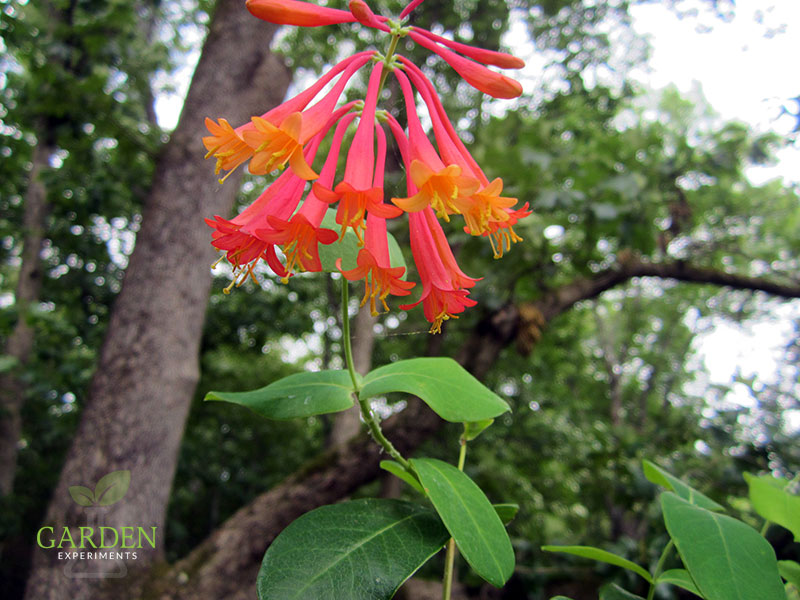
#14: Pink muhly grass
If you’re looking for a native perennial grass that adds color to your fall garden, pink muhly grass (Muhlenbergia capillaris) is the one for you. It produces plumes of pink flowers in late summer to fall. The grass grows up to 3 feet tall and, when planted in groupings, creates a soft sea of pink color that moves with the wind. This grass is native to the southeastern U.S. Pink muhly grass is drought-tolerant and low-maintenance once established. It grows best in full sun but can tolerate some shade.
